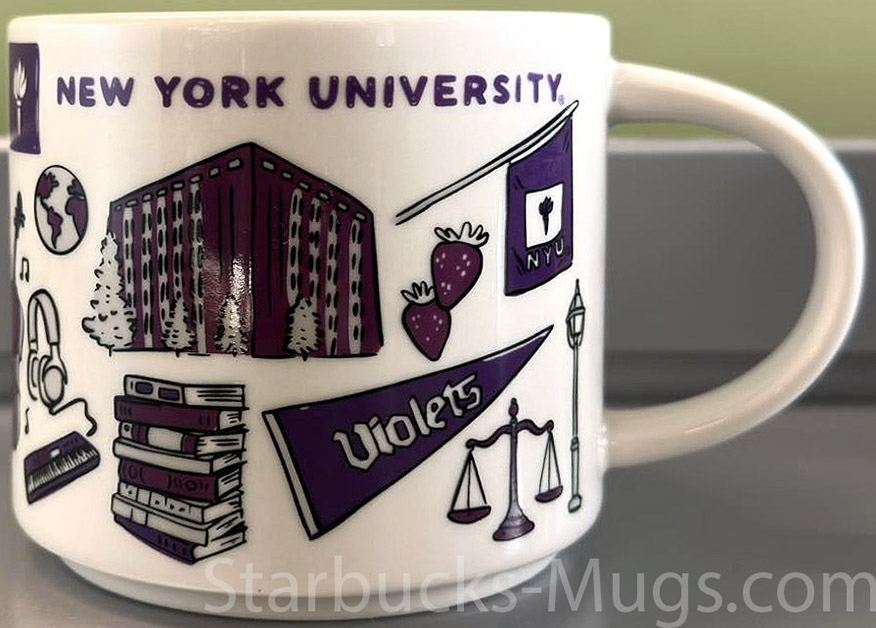
Been There – New York University
It has been a while since I’ve had a new release from the Campus Collection for review, and it seems that Been There New York University mugs are finally widely available now.
New York University (NYU) was founded in 1831 by a group of prominent New Yorkers led by then-Secretary of the Treasury Albert Gallatin. The vision was to create a non-denominational, accessible institution that catered to the working class, a stark contrast to the private, religious colleges that dominated the educational landscape of the time. NYU’s first classes were held in Clinton Hall, near City Hall in Lower Manhattan, reflecting its roots in the heart of New York City. As the university grew, it relocated to its current central campus in Greenwich Village, a neighborhood renowned for its cultural and artistic vibrancy. Throughout its history, NYU has been at the forefront of higher education innovation, contributing to fields ranging from law and medicine to the arts and social sciences. Today, it stands as one of the largest private universities in the United States, recognized for its commitment to diversity, research, and unique urban character.
Here are some symbols of the NYU that we can see on the mug:
– The design of the mug is completed using violet, which is the official color of New York University. It has been a symbol of the institution since its early years. This distinctive color was chosen to represent the university’s commitment to creativity, ambition, and academic excellence, aligning with the vibrant and dynamic spirit of New York City. Today, the violet hue is prominently featured in NYU’s branding, athletic uniforms, and campus events, serving as a unifying symbol for the university community.
– The NYU Torch is a powerful symbol of enlightenment, knowledge, and the university’s commitment to intellectual freedom. It represents the guiding light of education that NYU aims to provide its students, fostering curiosity, critical thinking, and innovation. This emblem is prominently displayed in the university’s logo and on campus, serving as a reminder of NYU’s mission to ignite the minds of its diverse and dynamic student body.
– Located in the heart of Greenwich Village, the Washington Square Arch is one of the most iconic landmarks associated with NYU. Originally built in 1892 to commemorate the centennial of George Washington’s inauguration, the arch now serves as a central meeting place and a symbol of the university’s close connection to New York City. Its presence in Washington Square Park creates a picturesque backdrop for university events, student gatherings, and daily campus life.
– Bobst Library, NYU’s central library, stands as a beacon of academic excellence and scholarly research. With its modernist design and expansive resources, it provides students and faculty access to millions of volumes, digital resources, and special collections. The library’s vibrant atmosphere and state-of-the-art facilities make it a vital hub for study, collaboration, and intellectual exploration on campus.
– NYU’s Arts and Science division is the university’s largest academic unit, encompassing a broad range of disciplines that emphasize both critical inquiry and creative expression. Known for its distinguished faculty and rigorous programs, the division offers undergraduate and graduate students opportunities to engage deeply with subjects ranging from the humanities and social sciences to the natural sciences and mathematics. It embodies NYU’s commitment to fostering interdisciplinary study and cultivating leaders who can address complex global challenges.
– The Brooklyn Bridge serves as a symbolic and literal connection between NYU’s main campus in Manhattan and its growing presence in Brooklyn. This iconic structure represents the university’s commitment to expanding its reach across the diverse neighborhoods of New York City, enhancing academic opportunities and community engagement. The bridge’s historic significance and architectural beauty also highlight NYU’s integration with the city’s cultural and historical landscape, offering students a unique urban experience.










































































